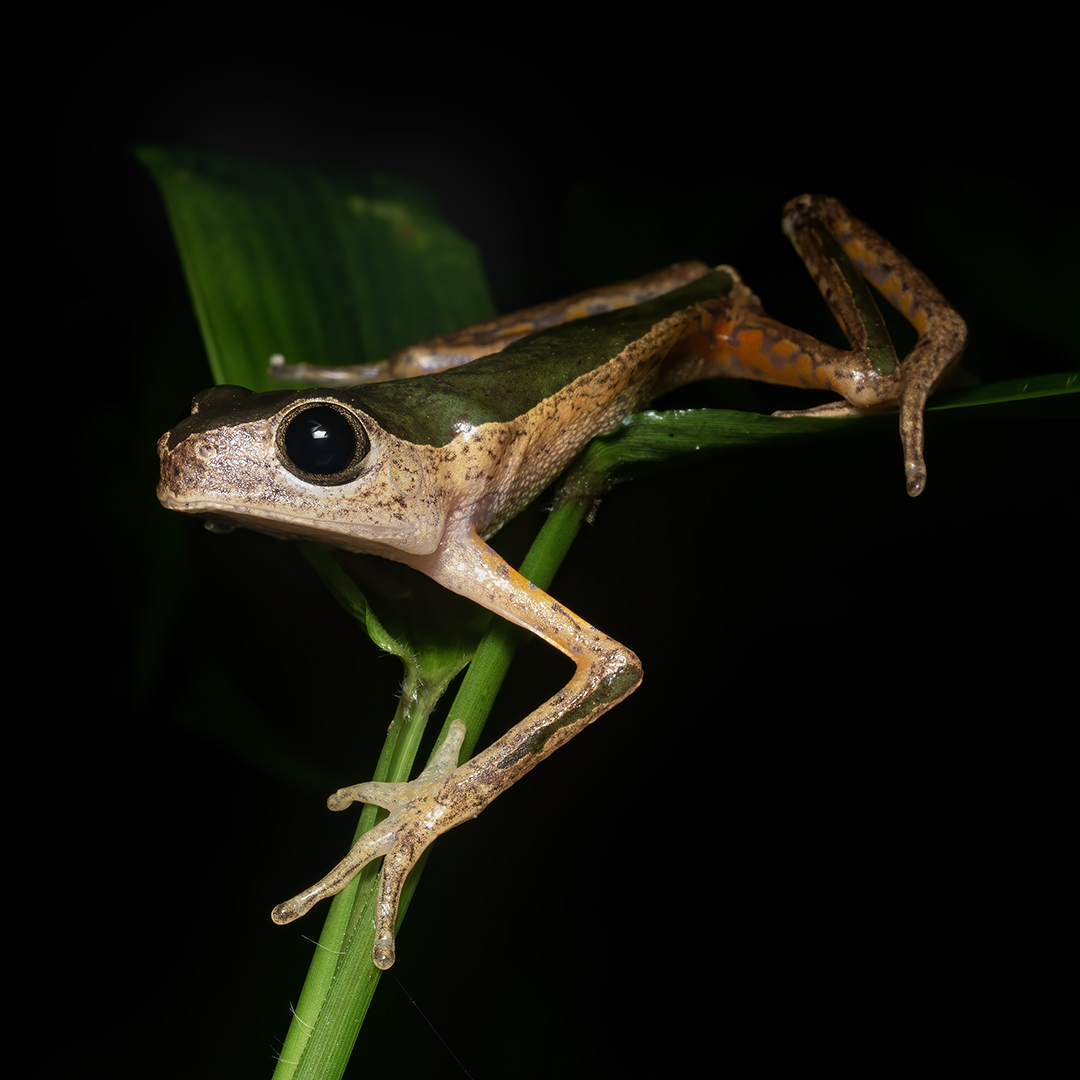Did you know there used to be frogs in Antarctica?
The image above is of a Jaguar Leaf Frog from the subfamily Phyllomedusinae – photographed in southeastern Peru. The one below is of a Green Tree Frog from the subfamily Pelodryadinae – photographed in northern Australia… and the fascinating thing is that these two frogs are sisters! (Well, at least in a taxonomic sense.)

You see, back in the Eocene – around 50 million years ago – the great^(10 million)-grandmother of these two frogs decided to make the very long voyage from South America to Australia.
Back then, frogs hadn’t worked out how to sail or fly yet (indeed, they still haven’t), so their abuela needed to make the expedition on foot. Thankfully, Antarctica formed a land bridge between South America and Australia at the time, and it was even covered in lush, temperate rainforests as well, making for a rather comfortable journey.
Shortly thereafter, tectonic activity separated Antarctica from the rest of the world, resulting in the formation of the Antarctic Circumpolar Current. The resulting reduction in warm water flow from the north, combined with a gradual decrease in global carbon dioxide levels, slowly turned Antarctica into the cold, icy landmass we know today, and cut the Australian Tree Frogs off from their South American family members forever.
Interestingly, this means that Australian frogs from the genera Litoria, Ranoidea and Nyctimystes are actually more closely related to the South American Phyllomedusinae than to any of the other frogs in Australia.
–
Jaguar Leaf Frog (Pithecopus palliatus), Los Amigos Biological Station, Peru
Green Tree Frog (Ranoidea caerulea), Berry Springs, Australia


